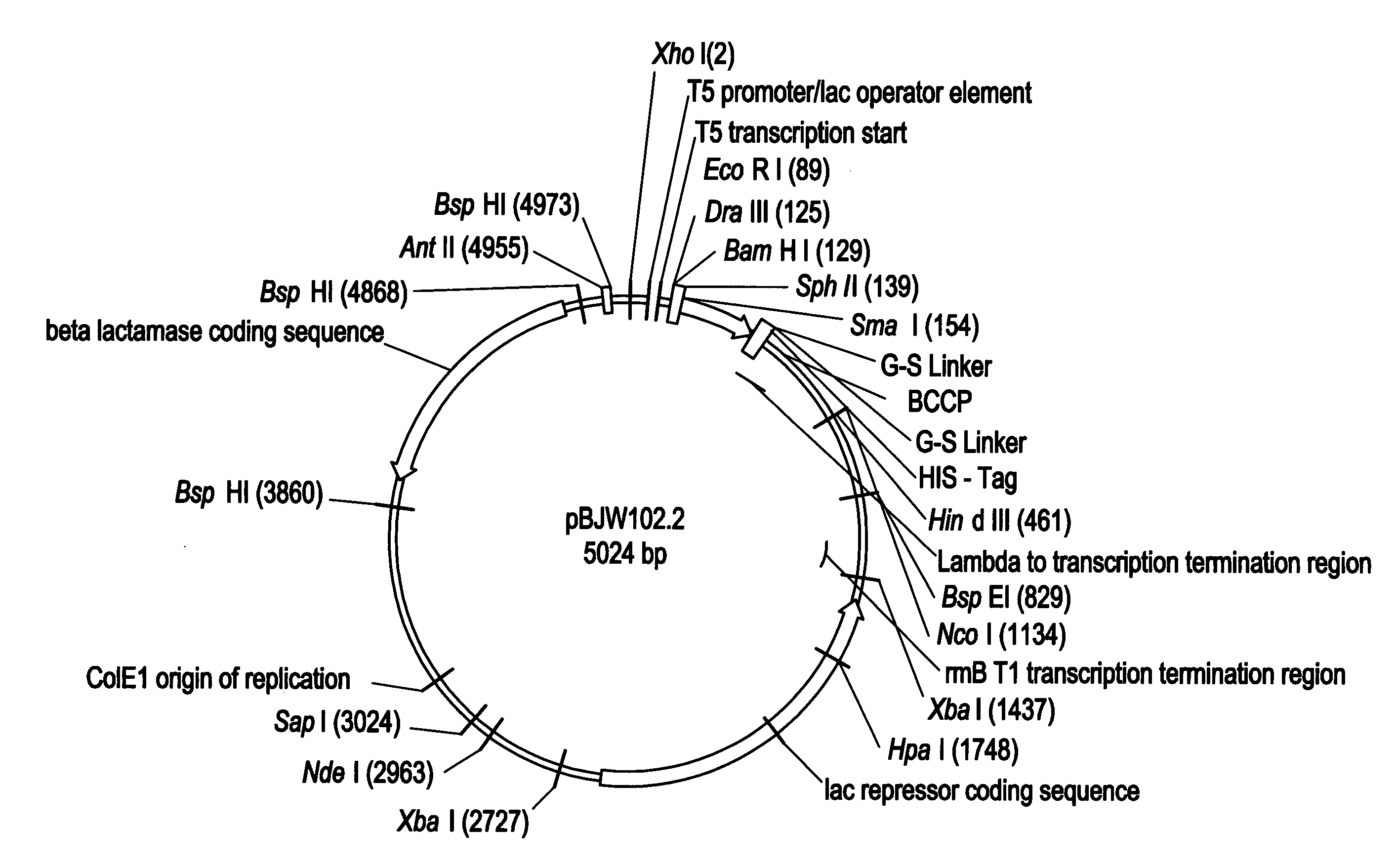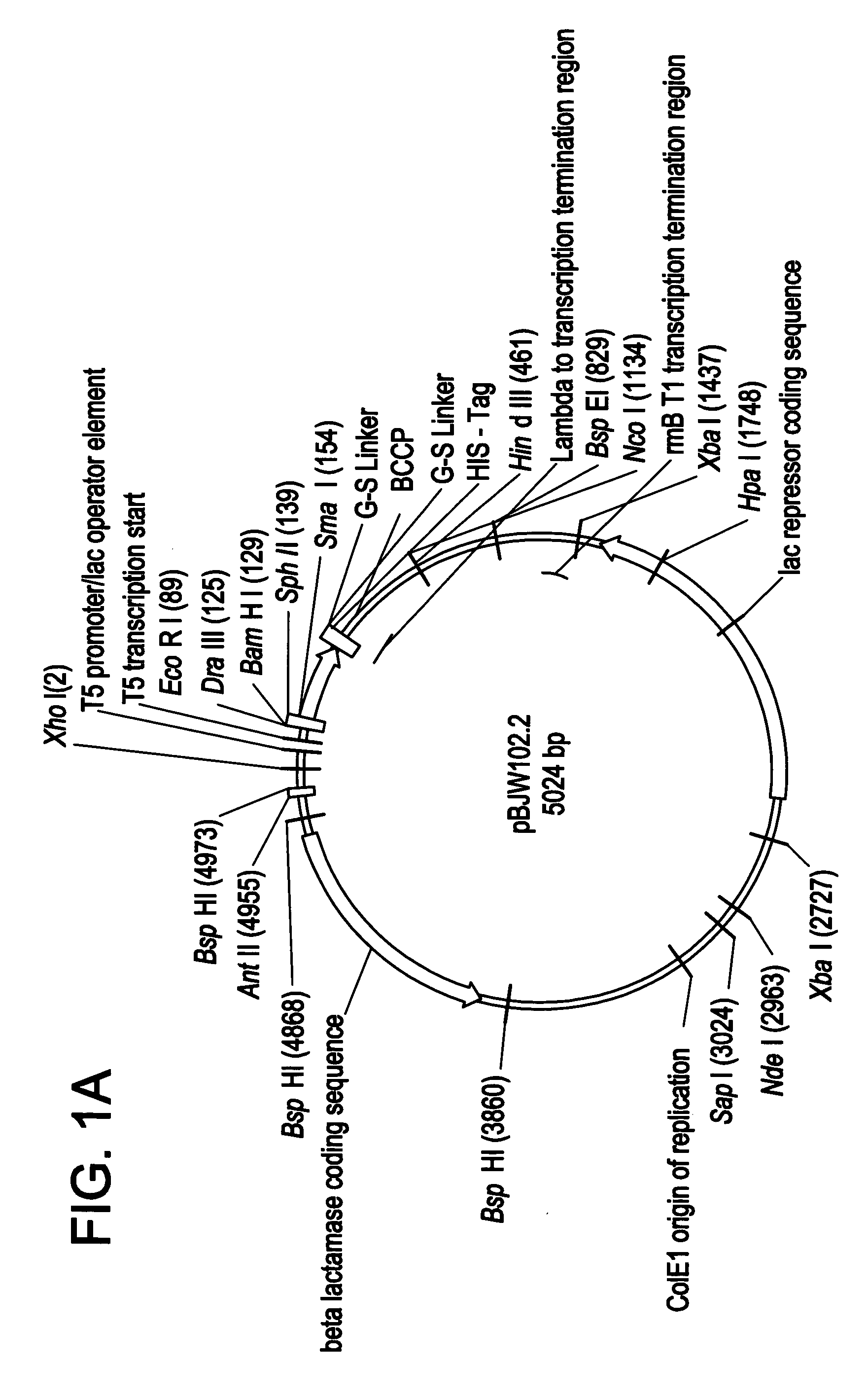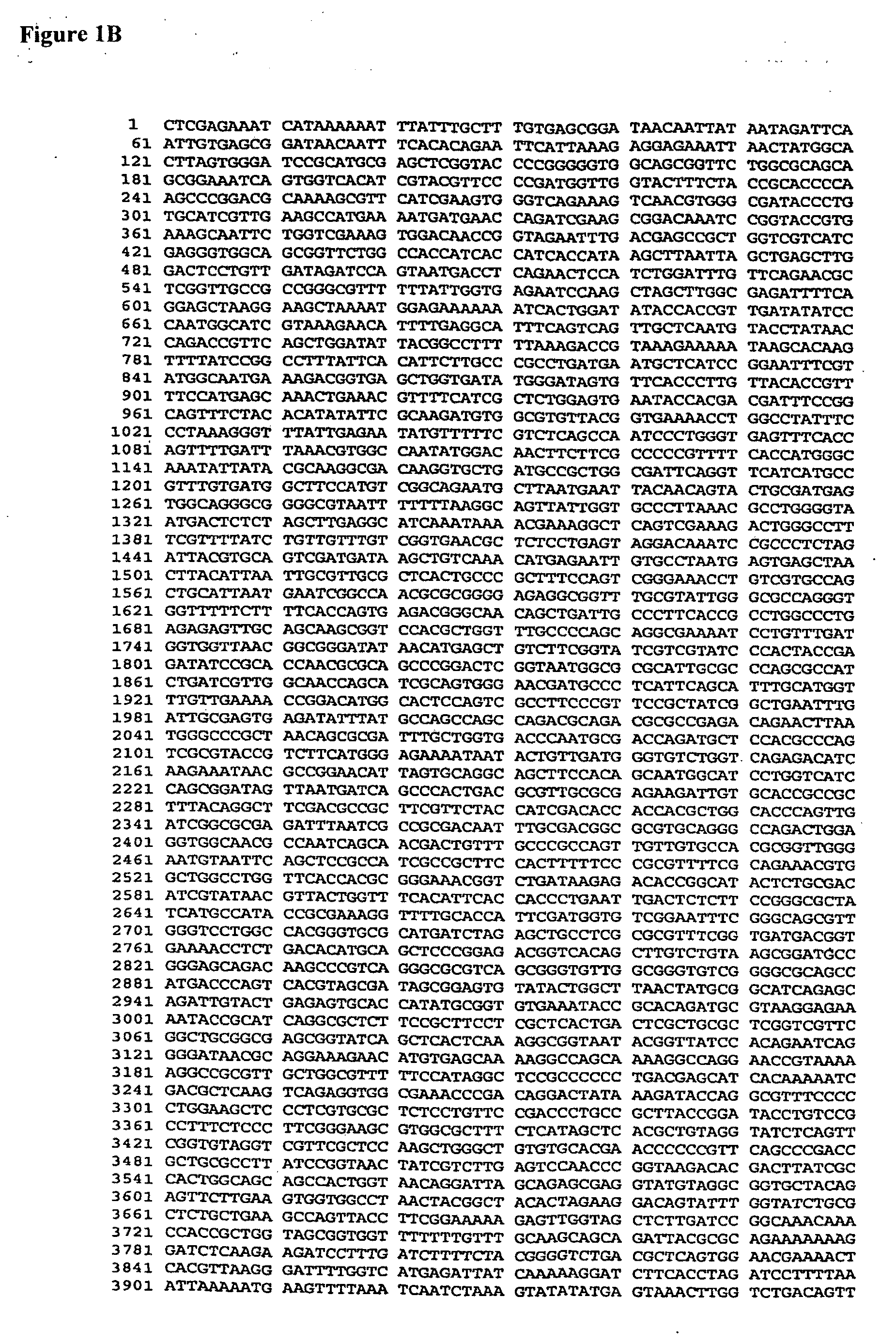Protein arrays and uses thereof
a protein array and array technology, applied in the field of molecular biology and drug discovery, can solve the problems of cumbersome and unattractive, difficult to perform p450 purification in a multiplexed manner, and inability to achieve the effect of correct folding and function, high throughput and high throughpu
- Summary
- Abstract
- Description
- Claims
- Application Information
AI Technical Summary
Benefits of technology
Problems solved by technology
Method used
Image
Examples
example 1
Cloning of Wild Type H. sapiens Cytochrome P450 Enzymes CYP2C9, CYP2D6 and CYP3A4
[0114]The human cytochrome p450s have a conserved region at the N-terminus, this includes a hydrophobic region which facilitates lipid association, an acidic or ‘stop transfer’ region, which stops the protein being fed further into the membrane, and a partially conserved proline repeat. Three versions of the p450s were produced with deletions up to these domains, the N-terminal deletions are shown below.
ConstructVersionN-terminal DeletionT009-C2 3A4Proline-34 AAT009-C1 3A4Stop Transfer-25 AAT009-C3 3A4Hydrophobic peptide-13 AAT015-C2 2C9Proline-28 AAT015-C1 2C9Stop Transfer-20 AAT015-C3 2C9Hydrophobic peptide -0 AAT017-C1 2D6Proline-29 AAT017-C2 2D6Stop Transfer-18 AAT017-C3 2D6Hydrophobic peptide -0 AA
[0115]The human CYP2D6 was amplified by PCR from a pool of brain, heart and liver cDNA libraries (Clontech) using specific forward and reverse primers (T017F and T017R). The PCR products were cloned into ...
example 2
Cloning of NADPH-Cytochrome P450 Reductase
[0121]NADPH-cytochrome P450 reductase was amplified from fetal liver cDNA (Clontech), the PCR primers (NADPH reductase F1 5′-GGATCGACATATGGGAGACTCCCACGTGGACAC-3′; NADPH reductase R1 5′-CCGATAAGCTTATCAGCTCCACACGTCCAGGGAG-3′] incorporated a Nde I site at 5′ and a Hind III site at the 3′ of the gene to allow cloning. The PCR product was cloned into the pJW45 expression vector (FIGS. 2A&B)), two stop codons were included on the reverse primer to ensure that the His-tag was not translated. Correct recombinant clones were determined by PCR screening of bacterial cultures, and by sequencing.
example 3
Cloning of Polymorphic Variants of H. sapiens Cytochrome P450s CYP2C9, CYP2D6 and CYP3A4
[0122]Once the correct wild-type CYP450s FIGS. 3, 4, &5) were cloned and verified by sequence analysis the naturally occurring polymorphisms of 2C9, 2D6 and 3A4 shown in Table 4 were created by an inverse PCR approach (except for CYP2D6*10 which was amplified and cloned as a linear PCR product in the same way as the initial cloning of CYP2D6 described in Example 1). In each case, the forward inverse PCR primer contained a 1 bp mismatch at the 5′ position to substitute the wild type nucleotide for the polymorphic nucleotide as observed in the different ethnic populations.
TABLE 4Polymorphic forms of P450 2C9, 2D6 and 3A4 clonedCytochromeP450 polymorphismEncoded amino acid subsitutionsCYP2C9*1wild-typeCYP2C9*2R144CCYP2C9*3I359LCYP2C9*4I359TCYP2C9*5D360ECYP2C9*7Y358CCYP2D6*1wild-typeCYP2D6*2R296C, S486TCYP2D6*9K281delCYP2D6*10P34S, S486TCYP2D6*17T107I, R296C, S486TCYP3A4*1wild-typeCYP3A4*2S222PCYP3A4...
PUM
| Property | Measurement | Unit |
|---|---|---|
| volume | aaaaa | aaaaa |
| density OD | aaaaa | aaaaa |
| pH | aaaaa | aaaaa |
Abstract
Description
Claims
Application Information
 Login to View More
Login to View More - R&D
- Intellectual Property
- Life Sciences
- Materials
- Tech Scout
- Unparalleled Data Quality
- Higher Quality Content
- 60% Fewer Hallucinations
Browse by: Latest US Patents, China's latest patents, Technical Efficacy Thesaurus, Application Domain, Technology Topic, Popular Technical Reports.
© 2025 PatSnap. All rights reserved.Legal|Privacy policy|Modern Slavery Act Transparency Statement|Sitemap|About US| Contact US: help@patsnap.com



